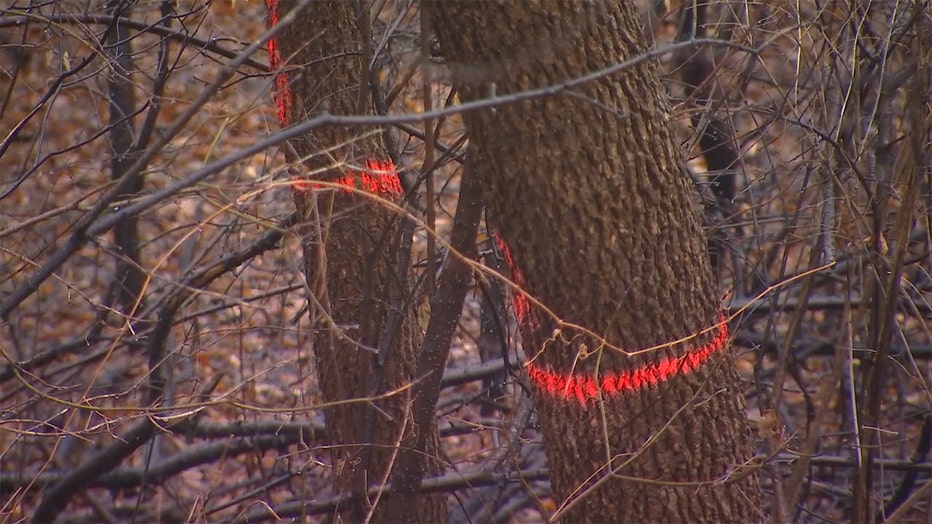Worst year yet for Emerald Ash Borer in many Twin Cities suburbs

Worst year yet for Emerald Ash Borer in many Twin Cities suburbs
As suburbs aim to curb the infestation of Emerald Ash Borer, officials are finding cases rising and spread worse than previous years.
(FOX 9) - As suburbs aim to curb the infestation of Emerald Ash Borer, officials are finding cases rising and spread worse than previous years.
"The inner part of the metro is getting especially hit hard," Ryan Spencer from Rainbow Treecare told FOX 9. "We’re also seeing people who haven’t had to worry about Emerald Ash Borer before suddenly picking up the phone and giving us a call because it’s suddenly a problem."
Emerald Ash Borer was first discovered in St. Paul in 2009, and a year later in Minneapolis. The city of Minnetonka first reported it in 2019 and has since been actively working to slow the spread.
"It’s grown exponentially this past year and it’s only going to get worse," said city forester Hannibal Hayes.
Minnetonka is among most cities in the metro that comb neighborhoods looking for infested trees during the winter months. Hayes said it’s imperative these trees are removed before the larvae hatch in the spring – which is why the city usually requires flagged trees be removed by May.

As suburbs aim to curb the infestation of Emerald Ash Borer, officials are finding cases rising and spread worse than previous years.
"If you cut an ash tree down during the growing season when there’s adult beetles flying around, it actually encourages them to fly into neighboring trees," said Hayes.
Ash trees that are healthy or newly infested can often be saved by root injections offered by most tree care companies.
Spencer says a telltale sign of Emerald Ash Borer is blonding, or bark loss, as well as crown die back, or a lot of dead branches at the top of the tree. In the summer, you’ll also notice canopy thinning.
Trees that are marked for removal are the homeowner’s responsibility to remove. Hayes said they will work with individuals who cannot afford the unexpected cost.

